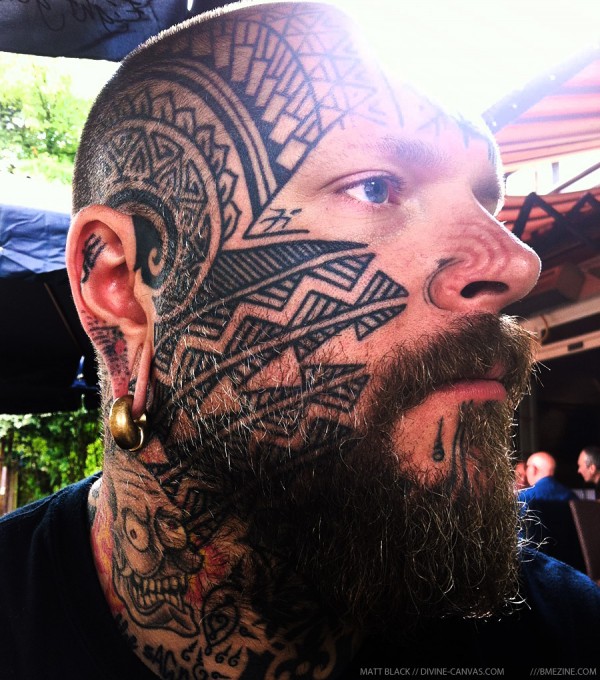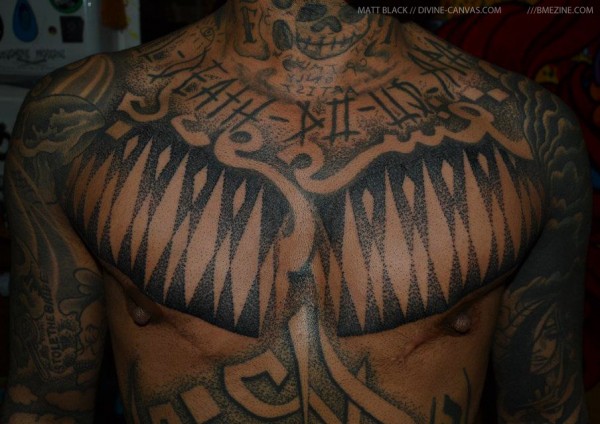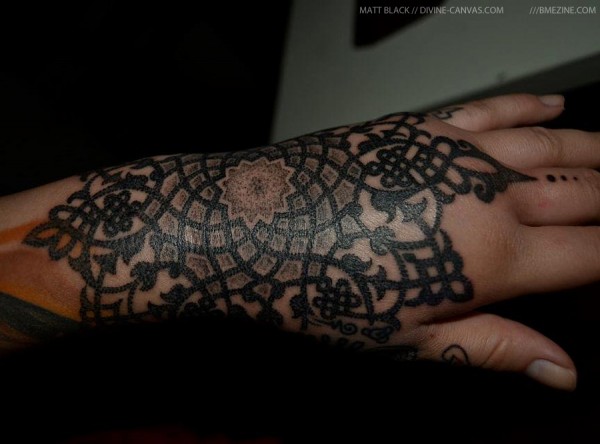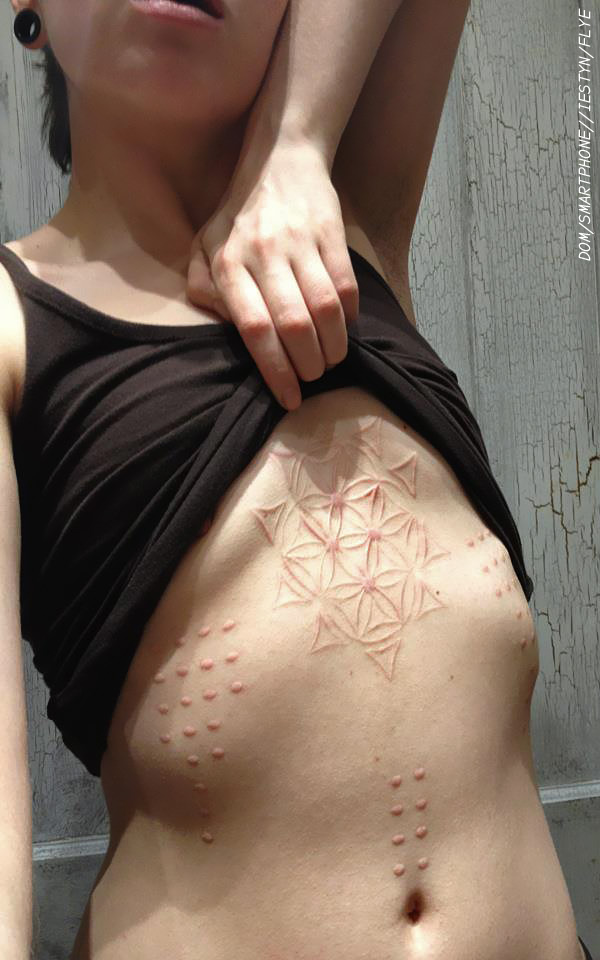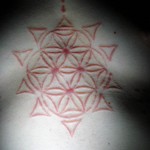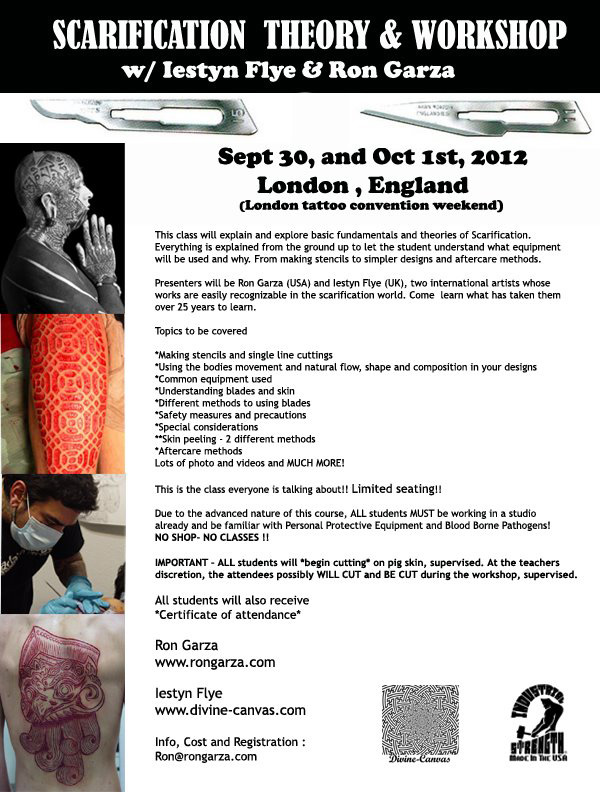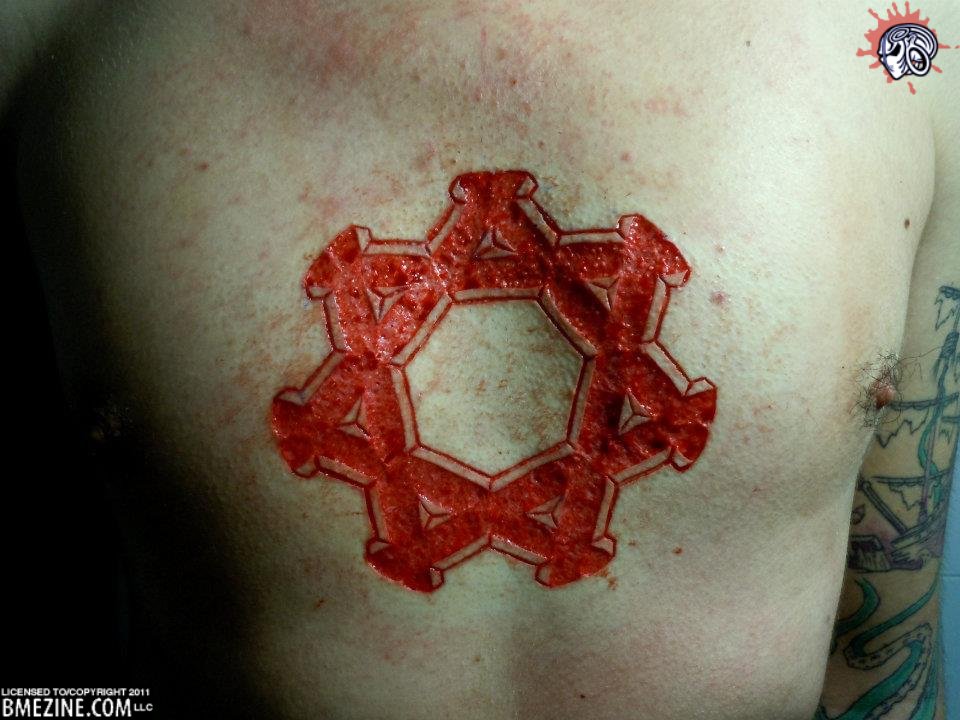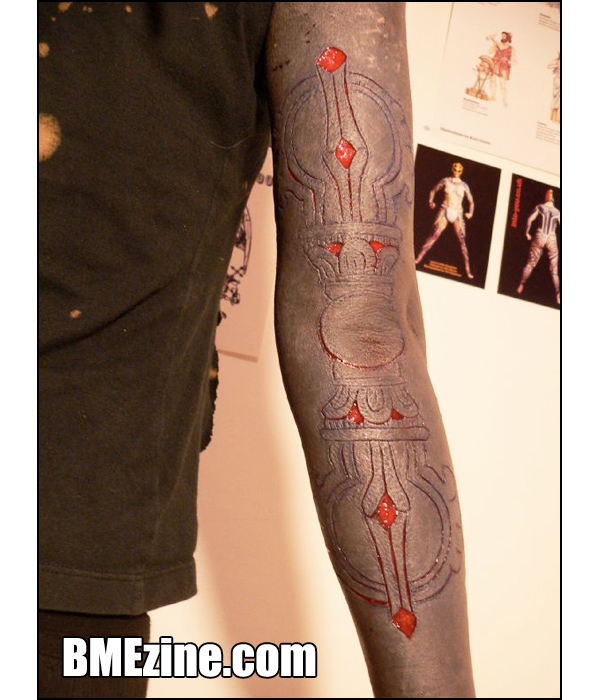Speaking of Iestyn Flye (see the entry below this one for the scarification seminar he’s hosting with Ron Garza), I also wanted to share this amazing set of very British deep chest piercings he did. You may be wondering to yourself how such a thing could heal, since of course if you shrunk the whole thing down to 14ga, this would be about the least advisable way to do a surface piercing. However, once you start talking about this bulk of tissue, the body responds quite differently and rather than trying to spit the material out like a sliver, accepts it as “too large to fight” and sullenly heals around it — albeit in a process that can take a year or more to fully mend (with a certain amount of kicking and screaming by the tissue!).
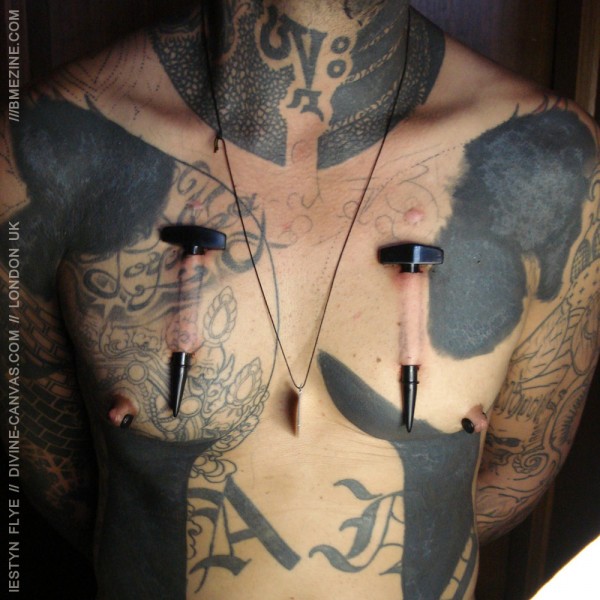
I have been reading some of the comments on things I’ve posted with great interest. I appreciate the many warm welcomes, but it is interesting to note there are some very conservative voices commenting with knee-jerk reactions to fringe body modification pictures without reading or understanding the associated text. I wonder if that will happen with these as it did with the subclavicles? Please, readers — try and give what I post the benefit of the doubt. If I post something I feel is unsafe, I assure you, I will say so. Yes, I have a high tolerance for the unusual, but I am also not a naive fool that doesn’t have enough experience to know what the body can heal safely and what it can’t. Over twenty years ago, in the 1980s, when I was a kid in highschool, I told my then-girlfriend that I would never get a tongue piercing, and that to do such a thing was an insane risk. That seemed a reasonable thing for me to say at the time, but it sure sounds silly now, doesn’t it? If I’ve learned anything since then, it’s that the body is a remarkably pliable vessel for our sentience, and that it will tolerate being manipulated and sculpted in far more diverse ways than common sense would suggest. Now, there’s nothing wrong with caution — it keeps us alive — but there is something wrong with continuing to have that fear when time and experience show something to be possible. And of course we must remember that aesthetics differ not just between cultures, but between individuals, and one may enjoy pale plainskin, another symmetric perfection, and another a face that looks like it was caught in an explosion at a body jewelry factory. To me, that’s always been a wonderful thing about BME — that it embraces all those flavors.




